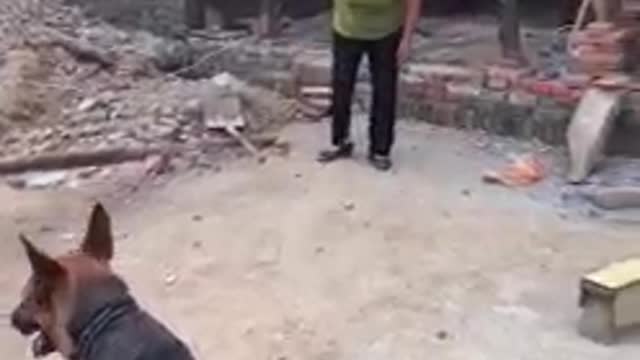Premium Only Content

How I wish the Dog can talk!
Humans can communicate what is going on with them, and dogs can, too. The difference is, while humans primarily use verbal communication, dogs mainly communicate non-verbally through the use of body language and secondarily through vocalizations. This body language includes tail carriage and motion, ear and eye position, body position and movement, and facial expressions. Knowledge of body language, and the ability to accurately identify it, will help decipher what a dog is trying to communicate. Check here for more information https://amzn.to/3pH9eV3
When observing a dog’s body language to determine what is being communicated, it is crucial to observe the entire dog, as well as the situation/context, in order to accurately determine what is being conveyed. For example, a wagging tail does not necessarily mean a friendly dog. A moving tail, as a part of the dog’s body language that is readily identifiable, is often noticed first. However, if the dog’s body is stiff, the ears are back and the dog is in a crouching position, these other features of body language are telling you that this is not a happy dog.
There are five common groups of canine communication signals. As you review the groups, please keep in mind that in a given situation a dog can demonstrate more than one of these groupings in response to the situation. For example, a dog may begin by displaying excitement signals in response to a stimulus, decide that stimulus is a threat, and switch to aggressive signals, fear signals, or even both. Also keep in mind that stress can drastically influence a dog’s response to a given situation. Again, we must look at the whole dog and his body language, as well as the situation/environment in order to get the “big” picture of what the dog is communicating, what may happen next, and what our appropriate responses should be.
-
 LIVE
LIVE
SpartakusLIVE
8 hours agoMore RANKED || High-intensity SWEAT and ULTRA-PREMIUM content
4,181 watching -
 LIVE
LIVE
BrancoFXDC
5 hours ago $10.14 earnedWarzone Resurgence Rounds!
1,449 watching -
 48:02
48:02
Man in America
11 hours agoWill Trump FINALLY Prosecute the 2020 Election Criminals? w/ FEC Commissioner Trey Trainor
59.1K29 -
 12:51
12:51
Tundra Tactical
9 hours ago $26.64 earnedNYC Killer: Guilty or Patsy?
83.9K14 -
 26:09
26:09
MYLUNCHBREAK CHANNEL PAGE
1 day agoThe Hidden Tunnels of Osiris
117K52 -
 2:42:35
2:42:35
Jewels Jones Live ®
1 day agoLAWFUL DRONES | A Political Rendezvous - Ep. 102
144K32 -
 4:22:48
4:22:48
Pepkilla
14 hours agoWarzone Ranked Road to 250 ~ HaLLLLPPPPP
99.9K5 -
 2:14:38
2:14:38
SLS - Street League Skateboarding
9 days ago2024 SLS Super Crown São Paulo: Men's Prelims
222K40 -
 1:11:07
1:11:07
PMG
23 hours ago $16.02 earned"Alarming Parallels of Modern America and the Roman Empire | Jeremy Ryan Slate"
83.4K52 -
 46:39
46:39
Stephen Gardner
16 hours ago🔥FINALLY! Trump BLACKMAIL scheme EXPOSED | 'Ukraine will be DESTROYED' worries US Pentagon!
134K214